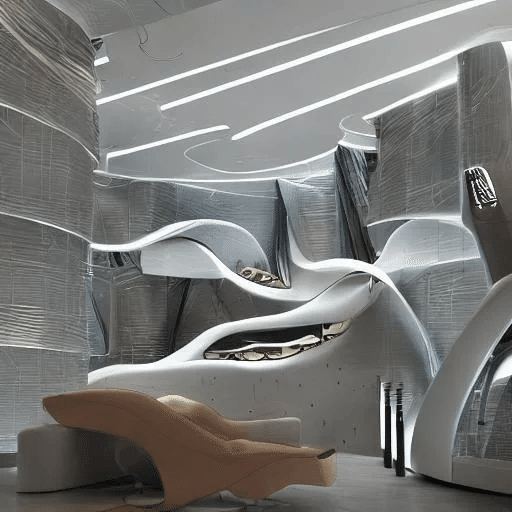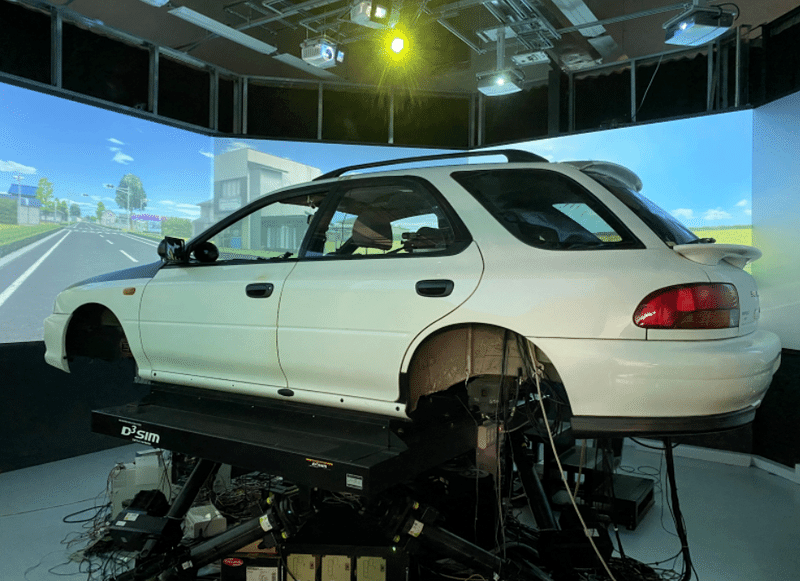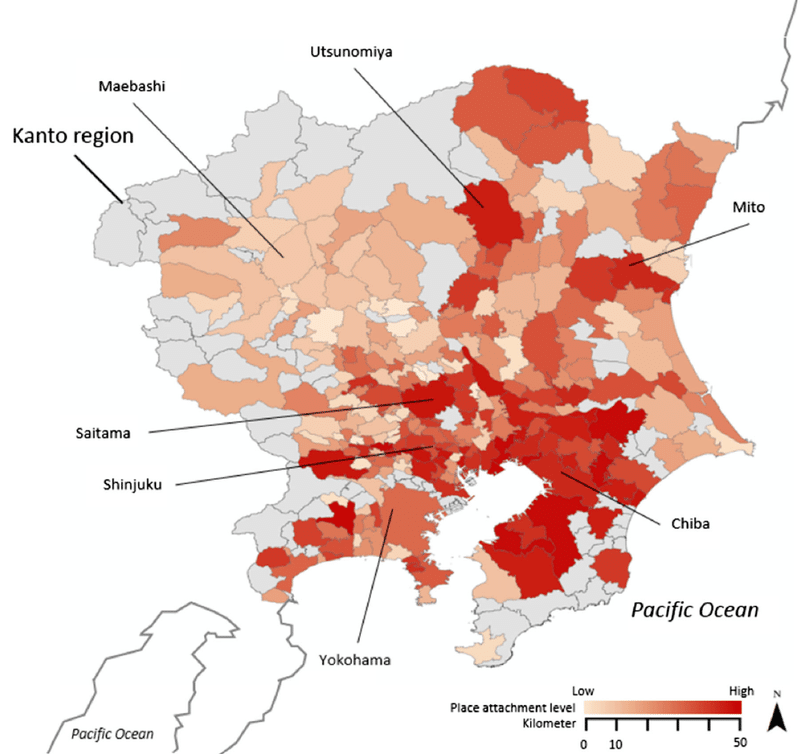Biography/Research Achievements|Masahiro Taima
Current Position
- Project Assistant Professor, Resilience Practice Unit, Center for the Advancement of Interdisciplinary Education and Research, Kyoto University
- Collaborative Researcher, Mobility Culture Research Center, Keio University
- Visiting Researcher, School of Urban Planning and Design, Peking University
- CEO, mign, Inc.
Goals
Through the exploration and implementation of cutting-edge knowledge and technology, I would like to contribute to the realization of a society where many people around the world can lead affluent lives.
Specialties
- Architecture and civil engineering planning
- AI/Data Science
- Automatic driving and ergonomics
Hobbies
Sports, baseball, futsal, muscle training, martial arts, piano, art, travel, reading
Career
2023
Visiting Researcher, Peking University
2022 Assistant Professor, Resilience Practice Unit, Center for Interdisciplinary Education and Research, Kyoto University
Project Assistant Professor, Resilience Practice Unit, Center for the Advancement of Interdisciplinary Education and Research, Kyoto University
2020 Assistant Professor, Graduate School of Science and Engineering, Keio University
Project Assistant Professor, Graduate School of Science and Engineering, Keio University
Project Assistant Professor, Graduate School of Media and Governance, Keio University
D. in Urban Engineering, Graduate School of Engineering, The University of Tokyo
Completed International Graduate School of Excellence for the Creation of Future Society Space, The University of Tokyo
B.S. in Architecture, Yomiuri College of Science, Technology and Medical Welfare
2019
Research Fellow of the Japan Society for the Promotion of Science (JSPS)
Part-time lecturer at Chiba University
Birkbeck, University of London Visiting Research Student
2017
M.S. in Urban Engineering, Graduate School of Engineering, The University of Tokyo
2016
Short-term study abroad at University of Victoria, Canada (Robert Gifford's Environmental, Social and Personality Lab)
2015
B.S. in Construction, Faculty of Engineering, Utsunomiya University
2010
Graduated from Ryogoku High School in Tokyo, Japan (after failing the entrance exam to the University of the Arts)
Research Field
Software and hardware development in the architectural and civil engineering fields
Zaha Hadid-like architectural perspective created by image generation AI
Recently, I have been developing software and hardware solutions that contribute to productivity and efficiency in the fields of architecture, civil engineering, construction, and real estate, especially in the area of generative AI.
- Automation of construction operations using LLMs such as ChatGPT (e.g., automatic regulation checking, automatic answering of questions related to in-house manuals, etc.)
- Automatic creation of architectural perspective using image generation AI such as Stable Diffusion
- Creation of 3D models using image generation AI
- Remote construction site management using 3D data acquired by LiDAR, etc. and VR/AR
Architectural and urban analysis
Visualization of building shapes inferred from street shapes
We are researching knowledge and technologies for better urban planning by utilizing various data that can be obtained at scales ranging from architecture to national land, including data on building thermal environment, lighting, land use, transportation, population movement, real estate values, and government statistics.
- Developing technology to simulate the shape of buildings to be located based on the shape of the site and city blocks.
- Estimating the probability of building renewal in each district over time
- Analysis of the geographical environment in which patents are likely to be created
- Analysis of citizen activity using GPS data
- Analysis of geographic factors of crime
Automated Driving
Experiments on automated vehicle communication using driving simulators
We are working on research and development of automated driving in the Strategic Innovation Program (SIP), an inter-ministerial program led by the Cabinet Office, in collaboration with major automakers such as Toyota, Nissan, and Yamaha Motor, as well as with local government organizations, with the aim of establishing international standards for automated driving vehicles.
- Development of an AI device that automatically displays a message when a camera installed in a self-driving car recognizes a pedestrian.
- Analysis of drive recorder video of self-driving cars in a demonstration experiment in a local city
- Analysis of communication between self-driving cars and pedestrians using VR
- Demonstration experiment of self-driving car using the site of an accommodation facility
- Communication experiment between self-driving car and pedestrians using text messages
- Study of measures to reduce the danger of overtaking a following vehicle by an automated vehicle
Population movement
Visualization of the degree of attachment to each region as a factor in population movement
In order to examine policies to solve issues such as depopulation of regional cities and concentration of population in large cities, we are analyzing various data on factors that contribute to population movement, especially "place attachment," a positive emotion that people and organisms have toward places.
- Analysis of factors that cause migration from large cities to regional cities and effective policies
- Research on the influence of regional attachment on people's behavior (interaction with others and contribution to urban development)
- Analysis of physical and social factors of regional attachment
- Analysis of the relationship between tourism behavior and regional attachment in areas affected by the Great East Japan Earthquake
Others
I mainly use data to analyze people's psychology and behavior, and conduct research on the simulation of the physical environment of buildings and cities.
- Analysis of the causes of Japan's economic recession and the economic effects of various policies
- Quantifying people's feelings of beauty toward buildings and analyzing the factors behind these feelings
- Research on a method to evaluate a soccer player's performance and tactical achievement based on GPS data worn by the player.
Media Coverage, Lectures, etc.
Media Coverage
Aug. 24, 2023
Nikkei Architecture, August 24, 2023 issue
"The shortest possible time to show usable ideas from pictures drawn by image-generating AI
Jul. 21, 2023
[Newspaper] Kentsu Shimbun
AI generates architectural designs from past design cases.
Jul 10, 2023
[Newspaper] Kentsu Shimbun
ChatGPT answers while citing evidence.
Jul 10, 2023
[Newspaper] Kentsu Shimbun
Image Generation AI Creates Post-Renovation Image"
Jun 30, 2023
[WEB] BUILT
mign's automatic design generation software has a function to connect ChatGPT and Stable Diffusion.
Jun 22, 2023
[magazine] Nikkei Architecture
Nikkei Architecture, a web media magazine, published a report on "mign's new services, from specification creation to BIM operation, streamlining architectural practice with generation AI" on June 22, 20/06/22.
The same article is also reprinted in the web media "Nikkei Crosstech".
https://xtech.nikkei.com/atcl/nxt/mag/na/18/00211/061400005/
From Specification Creation to BIM Operation, Generated AI Streamlines Architectural Practice
June 14, 2023
[WEB] Nikkei Crosstec, Inc.
The concept of an "AI architect" who designs through dialogue is also being considered.
May 26, 2023
[WEB] BUILT
mign's AI service "inspit" judges the deterioration of structures with more than 95% accuracy using only a few dozen image learning data.
May 24, 2023
[Newspaper] Kentsu Shimbun
Residents report repair points to the government.
May 22, 2023
[Magazine] Nikkei Construction
AI detects risk of collision and checks whether harnesses are installed or not.
The same article is also reprinted in the web media "Nikkei Crosstech".
https://xtech.nikkei.com/atcl/nxt/mag/ncr/18/00008/051100346/
Danger Detection System trafe AI Detects Collision Danger and Checks Whether Harnesses Are Fitted.
May 15, 2023
[WEB] Nikkei Crosstec, Inc.
mign's AI Model for Determining Construction Defects Can Be Implemented by Learning Dozens of Images.
2023/04/20
[WEB] BUILT
ChatGPT" gives instant answers to BIM software problems, an additional feature to mign's construction-specific AI model "chact".
2023/03/03
[WEB] Nikkei Crosstech
The popular image generation AI is also used for architectural design, reducing the time and effort required in the early stages of design".
Lecture
2024/2/3/3
The University of Tokyo's "Architecture and Urban DX Human Resource Development Program
Research and development in the fields of architecture, urbanism, and civil engineering using generative AI and various other data".
June 19, 2023
The 88th Artificial Intelligence Seminar "Properly understanding what ChatGPT can do - Technology overview and practical examples
Solutions using Generative AI in the Architectural and Civil Engineering Domain
2022/2/25
The Japan Institute of Building Information WEEK 2022
Organizing advanced AI implementation cases of overseas companies in the real estate construction domain and the possibility of AI implementation by domestic companies.
Research Achievements
International Conference Papers
Taima, M. & Yu, L. (2023). The Impact of Disasters on Tourism Behavior: Focusing on COVID-19 in China and the Great East Japan Earthquake in Japan. 7th World Research Summit for Hospitality and Tourism.
Taima, M. (2023). eHMI Communication Device for Automated Vehicles Using Object Detection Algorithm.
Taima, M., & Daimon, T. (2023). Communication Method for Automated Vehicles to Reduce Pedestrian Inefficiency and Anxiety During Crossing Cases Using a Closed-Road Environment.
Taima, M., & Daimon, T. (2023). Influences of eHMI in Automated Vehicles on the Recognition and Confirmation Behavior of Following Drivers.
Taima, M. (2023). Demonstration Test of Automated Vehicle and Analysis of Drive Recorder Video at the Lodging Facility Site. IEEE 17th International Conference on Industrial and Information Systems.
Taima, M., Shiode, S., Shiode, N., & Nakata, T. (2023). Geospatial Modelling of Arson Incidents in the Urban Areas of Kyoto, Japan. Royal Geographical Society (with the Institute of British Geographers) Annual International Conference.
Taima, M., & Daimon, T. (2023). Unsafe and inefficient communication between automated buses and road users on public roads in Japan. IEEE 1st International Conference on Advanced Innovations in Smart Cities.
Taima, M., & Daimon, T. (2023). Differences in pedestrian behavior at crosswalk between communicating with conventional vehicles and automated vehicles in real traffic environment. 1st International Conference on Hybrid Societies.
Tabi, S., Sakai, Y., Tung, N., Taima, M., Cheddadi, A., & Ikeda, Y. (2022). A Framework For A Gameful Collective Urbanism Based On Tokenized Location Data And Liquid Democracy: Early Prototyping Of A Case Study Using E-Bikes. The 2022 annual conference for Computer-Aided Architectural Design Research in Asia.
Taima, M., & Daimon, T. (2021). Interaction between low-speed automated vehicles and other road users in field operational test in Japan. 21st Triennial Congress of the International Ergonomics Association.
Taima, M., & Asami, Y. (2019). Estimation of building shape by block size. 29th International Cartographic Conference.
Taima, M., & Asami, Y. (2018). Determinants of Out-migration from Metropolitan Areas in Japan. the 3rd Conference on Urban Planning & Sustainable Cities.
Taima, M., Asami, Y., & Ishikawa, T. (2017). Emotional Bonds Between People and Place: A Review and Analysis of the Scales. 19th International Conference on Environmental Psychology.
Taima, M., & Asami, Y. (2017). Influential factors of building footprint location and prediction of office shape in city blocks in Tokyo's commercial zones. Spatial Data Handling in Big Data Era, pp.197-223.(Proceedings of 17th International Symposium on Spatial Data Handling).
Taima, M., Asami, Y. & Hino, K. (2016). Influential factors of building footprint location and prediction of office shape in city blocks in Tokyo's commercial zones. 17th International Symposium on Spatial Data Handling.
Domestic conference
(2020). Factors of communication discrepancy between automated vehicles and other traffic participants. 61st Spring Meeting of the Society of Civil Engineering and Planning.
Kaneko, S., Tsushima, M., and Sadahiro, Y. (2019). An analysis of formation in soccer. 28th Conference on Geographical Information Systems.
Tsushima, M., Asami, Y. (2019). Estimation of regional attachment using open data. 25th Annual Conference of the Society for Human-Environment Studies.
(2019). Relationship between city block size and building shape. 59th Annual Conference of the Japan Society of Civil Engineering and Planning.
Tsushima, M., Nonaka, N., Takeuchi, K., Kamano, T., Nakano, M., Koike, S. (2017). Improvement of tactics and training policy in Japanese soccer by quantification of intensity. 79th National Convention of Information Processing Society of Japan.
Tsushima, M., Nonaka, N., Takeuchi, K., Kamano, T., Nakama, M., Koike, S. (2016). Intensity quantification: positional differences and comparison between Japanese and European teams. Sports Analytics and Statistical Science.
Tsushima, M. and Sakata, K. (2015). A study on differences in attitudes toward landscape of newly constructed bridges. JSCE Kanto Branch 42nd Technical Research Meeting.
Refereed Paper
Taima, M., & Daimon, T. (2023). Differences in pedestrian behavior at crosswalk between communicating with conventional vehicles and automated vehicles in a real traffic environment. Safety, Vol. 9, No. 1:2.
Daimon, T., Taima, M., & Kitazaki, S. (2022). Pedestrian Carelessness toward Traffic Environment Due to External Human-Machine Interfaces of Automated Vehicles. Journal of Traffic and Logistics Engineering, Vol. 9, No. 2, in press.
Taima, M., & Asami, Y. (2020). Determinants and policies of native metropolitan young workers' migration toward non-metropolitan areas in Japan.
Taima, M., & Asami, Y. (2019). Personal and regional determinants of out-migration from metropolitan areas in Japan. Review of Urban & Regional Development Studies, Vol. 31, No. 1-2, pp. 1-28.
Koike, S., Sadahiro, S., Tsushima, M., Taima, M. (2019). Blotting phenomenon of place names used for building names in Tokyo wards. GIS -Theory and Applications-, Vol.27, No.1, pp.25-31.
Taima, M., Asami, Y., & Ishikawa, T. (2019). relationships among psychological scales of various concepts related to place attachment. MERA Journal, Vol. 21, No. 1, pp. 1-10.
Taima, M., & Asami, Y. (2018). Estimation of Average Place Attachment Level in a Region of Japan. GeoJournal, Vol. 84, pp. 1365-1381.
Miyagawa, D., Asami, Y., Hino, K., Tsushima, M., Tsuima, M., Usui, H. (2018). The Likelihood of Building Renewal and Living Environment in Tokyo Metropolitan Area. Journal of City Planning, Vol.53, No.3, pp.1485-1490.
Takeuchi, K., Tsuima, M., Kidokoro, T., and Seta, F. (2018). A study on spatial analysis of technological innovation in Japan using patent data - focusing on sector innovation systems. Journal of Urban Planning, Vol.53, No.2, pp.172-178.
Hino, M., Miwa, M., Asami, T., Tsushima, M. (2018). Proximity to urban facilities and the number of steps. Journal of Planning, Architectural Institute of Japan, Vol.83, 746, pp.687-693.
Taima, M., Asami, Y. & Hino, K. (2017). the relation between block size and building shape. Environment and Planning B: Urban Analytics and City Science, Vol. 46, No. 1, pp. 103-121.
Taima, M., Asami, Y. & Hino, K. (2017). Spatial Data Handling in the Big Data Era, Springer (Chapter DOI: 10.1007/978-981-10-4424-3_14, ISBN: 978-981-10-4423-6)
Tsushima, M., Asami, T., Hino, K., Morioka, W. (2016). Determinants and estimation of built-up areas within city blocks in central Tokyo commercial areas. GIS - Theory and Application -, Vol. 24, No. 2, pp. 85-96.
Unrefereed Paper
Tsushima, M., Asami, Y., and Hino, K. (2016). Determinants of built-up areas in urban areas. CSIS Discussion Paper No.143
Tsushima, M. and Sakata, K. (2015). A study on the contribution of environmental quality to post-disaster revisit intention in tourism to Tohoku region. City Planning Report.
Other reports and contributions
Cabinet Office, Government of Japan (partial responsibility) (2022). Strategic Innovation Program (SIP) Phase 2. interim results report.
Lecture on population migration for political party officials. (2021).
Tsushima, Masahiro (2020). Individual and environmental factors of migration behavior from metropolitan to rural areas.
Tsushima, Masahiro.(2019). "Regional attachment" as a halt to the concentration of Tokyo.
Tsushima M., Mizutani K. (2018). Evaluation of historical landscape using AI. Machinami to Sumai, Japan Federation of Housing Organizations.
(2015). Streets with attractive landscape and its maze. Machinami to Sumai, Japan Federation of Housing Organizations. pp.3-24 (in Japanese).
References
Environment and Planning B: Urban Analytics and City Science (ISSN: 2399-8083). 2019.
Sustainability (ISSN: 2071-1050). 2018.
Etc.
Awards.
- Automated Driving Awards Human Consideration Award
- Vice-President, Ph.D. Program, Graduate School of Engineering, The University of Tokyo
- Best Paper of the Year Award from the Urban Planning Association
- Poster Session Award, Geographic Information Systems Society of Japan



